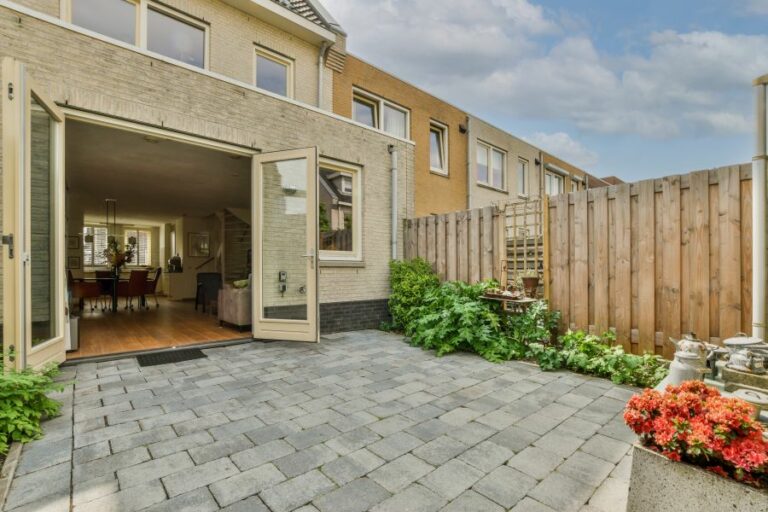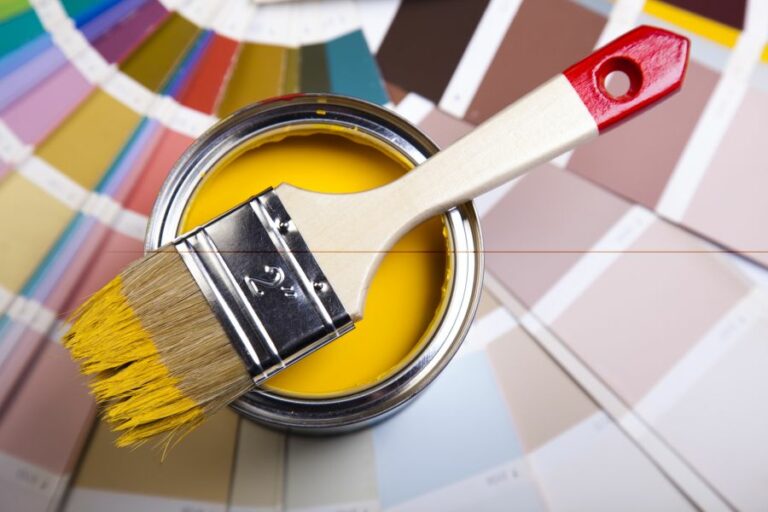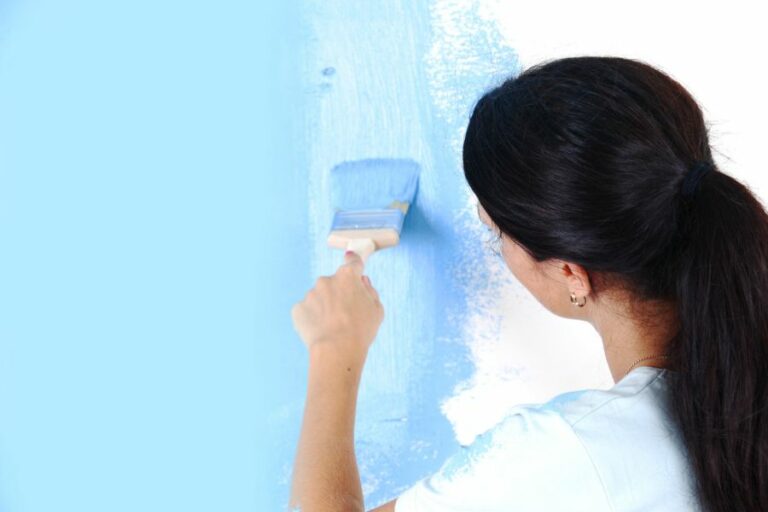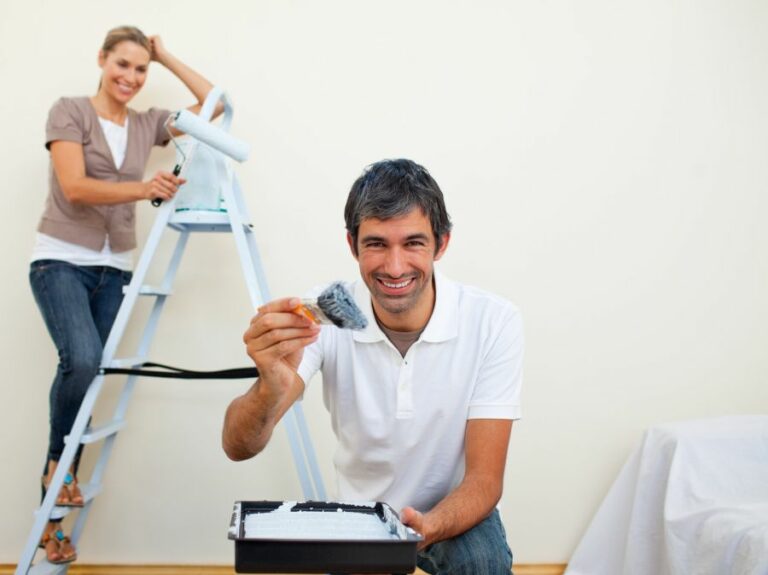Cheap Outdoor Paint, 25 Things You Should Know
Are you looking to revamp your outdoor space without breaking the bank? Look no further! I’m here to help you explore the world of cheap outdoor paint that doesn’t sacrifice quality. With my guidance, you’ll be confident in your ability to transform your space into a colorful oasis. So, let’s dive into some affordable, durable, and vibrant options for your outdoor painting projects!
Cheap outdoor paint:>
When choosing affordable exterior paint, consider factors such as durability, paint finish, UV resistance, moisture resistance, and VOC content. Recommended options include Behr Premium Plus Exterior Paint, Glidden Premium Exterior Paint, and Sherwin-Williams SuperPaint Exterior Paint. Ensure proper surface preparation, applying multiple coats, using quality tools, and painting in favorable weather conditions for a successful paint job.

Looking for affordable outdoor paint options that won’t break the bank? Read on to discover my top recommendations for cheap yet high-quality paints, ideal for giving your exterior spaces a fresh, new look!
Contents
- 1 Affordable Exterior Paint
- 2 What are the most cost-effective varieties of paint?
- 3 What is the Coverage Area of 5 Gallons of Exterior Paint?
- 4 What is the Coverage Area of 1 Gallon of Exterior Paint?
- 5 What is the price of one gallon of paint?
Affordable Exterior Paint
Outdoor spaces are essential elements of our homes, and maintaining their aesthetics and functionality is crucial for a pleasant and enjoyable experience. One of the critical aspects of maintaining these areas is choosing the right outdoor paint that is affordable and high quality.
• The Various Types of Outdoor Paint
– Water-Based Paints (Latex)
These paints are environmentally friendly, easy to clean, dry quickly, and have low amounts of volatile organic compounds (VOCs). They are suitable for various surfaces, including wood, masonry, metal, and stucco.
Pros:
- Dries quickly
- Easy to clean up
- Low VOCs
- Great for wood and masonry surfaces
Cons:
- Not as durable as oil-based paints
- Can be less resistant to weather conditions
- Might not stick well to specific surfaces
– Oil-Based Paints (Alkyds)
Oil-based paints are known for their durability, strong adhesion, and resistance to weather conditions. They can be used on various surfaces like wood, metal, and masonry, but they may require a primer.
Pros:
- Durable
- Resistant to weather elements
- Strong adhesion
- Great for metal surfaces
Cons:
- Longer drying times
- Requires paint thinner for cleanup
- High VOCs
• Factors to Consider When Choosing Cheap Outdoor Paint
– Durability
The paint’s durability is crucial since it directly affects its longevity and how well it can withstand external elements like rain, sunlight, and temperature variations. It’s essential to choose a paint that can retain its color and finish for an extended period.
– Paint Finish
The right paint finish can significantly impact the final result of your paint job. There are different types of finishes, such as flat, matte, eggshell, satin, semi-gloss, and gloss. The kind of finish you choose will depend on the desired aesthetic and practical requirements of your outdoor space.
– UV Resistance
Ultraviolet (UV) rays can lead to paint fading and degradation. Therefore, it’s essential to choose paint with high UV resistance to keep the colors vibrant and prevent them from fading.
– Moisture Resistance
A moisture-resistant paint can help protect surfaces exposed to rain and humidity, preventing water damage, mold, and mildew growth. This property is especially beneficial for wooden structures, such as decks and fences.
– VOC Content
Volatile Organic Compounds (VOCs) found in paint can affect both the environment and human health. Look for low-VOC or no-VOC paints to minimize these risks.
• Practical Tips and Tricks for a Successful Outdoor Paint Job
– Proper Surface Preparation
For a successful paint job, it’s essential to prepare the surface thoroughly, which includes cleaning, sanding, and applying primer, if necessary. Removing dirt, dust, and debris from the surface will enable better paint adhesion and create a smooth finish.
– Apply Multiple Coats
Applying multiple coats of paint will improve the paint job’s appearance, durability, and color retention. Be sure to let each coat dry fully before applying the next one.
– Use the Right Tools
Using high-quality brushes, rollers, and other painting tools can make a significant difference in the paint job’s final result. Invest in good-quality tools to ensure a smoother and more consistent application.
– Paint in the Right Weather Conditions
Painting in optimal weather conditions is crucial for getting the best results. Try to paint during dry and mild weather, avoiding extreme temperatures and high humidity.
• Recommendations for Cheap Outdoor Paints
– Behr Premium Plus Exterior Paint
This water-based exterior paint offers excellent durability, adhesion, and color retention, suitable for various surfaces.
– Glidden Premium Exterior Paint
This budget-friendly paint provides excellent coverage and moisture resistance, making it perfect for outdoor use.
– Sherwin-Williams SuperPaint Exterior Paint
This highly durable, weather-resistant paint is ideal for various surfaces, including wood, metal, and masonry.
• In Conclusion
When it comes to finding cheap outdoor paint that combines quality and affordability, there are numerous options available. Consider the essential factors, such as durability, finish, UV resistance, moisture resistance, and VOC content, to find the perfect paint for your outdoor space.
Moreover, following the practical tips and tricks mentioned above will ensure your paint job is successful and long-lasting. For more information and guidance, consult reputable sources like This Old House or your local paint store.
• Choosing the Right Exterior Paint for Your Home
Choosing the best paint for the exterior of your home can be a daunting task, especially with the wide variety of options available in the market. It is essential to invest in high-quality paint that can withstand harsh weather conditions, protect your home’s exterior materials, and maintain its aesthetic appeal.
– Acrylic/Latex Paints
Acrylic or latex paints are the most common choice for exterior painting projects, and for good reasons:
- Durability: Acrylic paints form a flexible, breathable, and UV-resistant film that can expand and contract with temperature changes, reducing the likelihood of cracking, peeling or blistering.
- Water-Based: They are water-based, which means they are easy to clean up using soap and water, and they have low levels of volatile organic compounds (VOCs).
- Quick Dry Time: Acrylic paints dry fast (typically in 1 to 4 hours), allowing you to complete your painting project quickly.
- Long-Lasting Color: These paints hold their color well and resist fading, keeping your home’s exterior looking fresh for many years.
It is essential to choose high-quality acrylic paint that is specifically designed for exterior applications. Look for options that have excellent adhesion, durability, and flexibility.
The U.S. Department of Energy recommends using elastomeric paints, which are a type of acrylic paint that offers superior elasticity and is ideal for painting surfaces prone to expansion and contraction.
– Oil-Based Paints
Oil-based paints were once a popular choice for exterior surfaces, but they have been largely replaced by acrylic paints due to environmental concerns, longer drying times, and the availability of acrylic paints with similar performance characteristics. However, they still have their advantages:
- Adhesion: Oil-based paints have excellent adhesion properties, making them suitable for painting over chalky or worn surfaces.
- Penetration: They can penetrate and seal porous surfaces, such as wood and masonry, providing a durable and protective barrier.
- Smooth Finish: Oil-based paints tend to have a robust and smooth finish, which is particularly desired when painting metal surfaces.
Although oil-based paints can still serve specific purposes, their use on exterior surfaces is generally not recommended due to their high VOC content, difficulty in application and cleanup, and the fact that they tend to get brittle and crack over time.
– Factors to Consider When Choosing an Exterior Paint
To choose the best paint for your home’s exterior, consider the following factors:
- Climate: The weather conditions in your area can play a significant role in the durability and performance of the paint. In general, you will want paint with excellent resistance to ultraviolet (UV) rays, moisture, and temperature fluctuations.
- Surface: The material of the surface you are painting is essential, as some paints adhere better to specific surfaces than others. For instance, acrylic paints are more suitable for most exterior surfaces, whereas oil-based paints might be preferable for certain porous surfaces or worn metal surfaces.
- Finish: Consider your desired finish when choosing paint. A flat or matte finish is ideal for hiding surface imperfections, while a semi-gloss or gloss finish is more resistant to dirt and moisture, making it easier to clean and maintain.
- Color: Lighter colors tend to reflect heat and UV rays better, reducing the potential for fading and deterioration. Darker colors absorb more heat and may cause the paint to fade more quickly.
– Tips for a Successful Exterior Painting Project
- Choose Quality Paint: Invest in a high-quality paint that is specifically designed for your surface type and climate.
- Proper Surface Preparation: Clean the surfaces thoroughly, repair any cracks or damage, and apply a suitable primer if necessary.
- Follow Manufacturer’s Instructions: This includes information on drying time, temperature ranges, and the number of coats required for optimal performance.
- Paint in Optimal Weather: Paint adheres and dries best between 50F and 90F and in low humidity conditions. Avoid painting during extremely hot or cold temperatures, high humidity, or direct sunlight.
- Maintenance: Regularly inspect and clean your home’s exterior, touching up any areas where the paint is peeling, cracking, or fading.
In conclusion, as a home painting expert, I highly recommend using high-quality acrylic paints for most exterior painting projects. While oil-based paints may still be useful in specific situations, the durability, ease of application, and environmental factors of acrylic paints vastly outweigh their benefits.
Remember to consider your home’s location, surface type, and desired finish when choosing an exterior paint, and always follow best practices for surface preparation and application to ensure a long-lasting, beautiful result.
Paint Type | Pros | Cons |
|---|---|---|
Acrylic/Latex | Water-based, easy to clean up, low VOCs, quick-drying, good color retention | May not adhere well to chalky surfaces, less flexible than oil-based paints |
Oil-Based | Long-lasting, durable, good adhesion, highly resistant to wear and tear | Higher VOCs, longer drying time, harder to clean up, may become brittle over time |
Paint-and-Primer Combination | Time-saving, good coverage, easy application | May not adhere well to certain surfaces, less durable than a separate primer and paint |
Elastomeric | Waterproof, flexible, excellent adhesion, bridges hairline cracks, ideal for stucco and masonry surfaces | More expensive, time-consuming application, may not be suitable for all surfaces |
What are the most cost-effective varieties of paint?
• Introduction
When it comes to sprucing up your home or adding a fresh new look to your space, paint is an essential tool. With a multitude of options available in the market, choosing the right type of paint can be overwhelming.
However, for those on a budget, finding the cheapest types of paint without compromising on quality can be a challenge.
• Latex-Based Paints
Latex-based paints are considered one of the most affordable types of paint available in the market. They are water-based and made with a combination of latex binders, pigments, and various additives. Latex paints are known for being easy to clean and maintain, as well as having quick drying times.
– Pros
- Cost-effective: One of the biggest advantages of latex-based paints is their price. They are considered an economical option, making them a popular choice for those on a budget.
- Low VOC levels: Latex paints have lower volatile organic compound (VOC) levels compared to oil-based paints. This means they are less harmful to the environment and your health.
- Easy to clean: Due to their water-based nature, latex paints can be easily cleaned with soap and water, making them a low-maintenance option.
– Cons
- Less durable: Latex paints may be more prone to chipping and peeling compared to their oil-based counterparts. This can be a concern, especially in high-traffic areas.
– Recommended Uses
I recommend using latex-based paints for interior walls, ceilings, and trim. They work well in rooms with less moisture content and are ideal for living rooms, bedrooms, and hallways. You may want to consider the use of specialized latex paint formulated for kitchens and bathrooms to address durability concerns.
• Acrylic Paints
Acrylic paints are another affordable option for those looking to save money. These paints are made from a combination of acrylic polymer emulsions and pigments, allowing them to be water-soluble but also water-resistant when dry.
– Pros
- Versatile: Acrylic paints can be used on a variety of surfaces, from walls and ceilings to furniture and outdoor structures.
- Quick-drying: Acrylic paints have quick drying times, which can be beneficial for completing projects more efficiently.
- Color retention: Acrylic paints are known for maintaining their color vibrancy over time.
– Cons
- May require multiple coats: Depending on the quality of the paint, you may need to apply more coats than other paint types for complete coverage.
- Can be difficult to clean: Acrylic paint can be more challenging to clean compared to latex paint.
– Recommended Uses
Acrylic paints are best suited for both interior and exterior applications. They can be used on a variety of surfaces such as wood, metal, and masonry. In my experience, using acrylic paints for outdoor projects and furniture restoration can yield impressive results.
• Chalk Paints
Chalk paints are an affordable option for those looking to achieve a matte, chalky finish on their projects. These paints contain calcium carbonate, which gives them their unique texture and appearance.
– Pros
- Easy to work with: Chalk paint is known for being forgiving and easy to apply, making it an attractive option for beginners or those looking for a simple painting experience.
- No priming necessary: Chalk paint can be applied directly to surfaces without the need for priming in most cases.
- Distressed finish: Chalk paint allows for easy application of distressed finishes, which can add a vintage or rustic look to your project.
– Cons
- Limited durability: Chalk paint may not be as durable or long-lasting compared to other paint types, requiring more frequent touch-ups or maintenance.
- Wax sealing necessary: To protect the chalk paint finish, a wax sealant must be applied, which can be time-consuming or cumbersome for some users.
– Recommended Uses
I recommend using chalk paint for furniture projects, particularly those with a vintage or rustic theme. Chalk paint can also be used on wood, metal, and even fabric, making it a versatile choice for DIY enthusiasts.
• Conclusion
There are several affordable paint options available for budget-conscious consumers. Latex-based paints, acrylic paints, and chalk paints all offer unique advantages and can be effectively used for various projects.
Choosing the right paint type will depend on your specific needs, desired finish, and the surface you are working with.
For more information on different types of paint, including comparisons and in-depth analysis, I recommend visiting Paint.org, a non-profit organization dedicated to providing resources for the paint and coatings industry.
Type of Paint | Average Price |
|---|---|
Distemper Paint | $10 – $15 per gallon |
PVA (Polyvinyl Acetate) Glue Paint | $12 – $18 per gallon |
Chalk Paint | $15 – $20 per gallon |
Primer Paint | $15 – $25 per gallon |
Flat/Matte Paint | $20 – $30 per gallon |
What is the Coverage Area of 5 Gallons of Exterior Paint?
When choosing the right amount of paint for your exterior painting project, it is crucial to determine the coverage you can expect from a specific quantity of paint.
• The Basics of Paint Coverage
Generally, a gallon of exterior paint covers around 250 to 400 square feet of surface area. With this estimate, five gallons of paint would cover approximately 1,250 to 2,000 square feet. However, the actual coverage may vary depending on factors such as:
- Surface texture and condition
- Color and type of paint
- Application method
- Number of coats needed
– Impact of Surface Texture and Condition
Paint coverage tends to be lower on rough, porous surfaces such as brick, stucco, or heavily textured siding. Smooth surfaces such as metal or vinyl siding usually have higher coverage rates. Similarly, the surface condition plays a role in the overall coverage.
If the surface has not been properly cleaned, primed, or repaired, the paint might not adhere appropriately, thus lowering the coverage rate.
In the case of rough or porous surfaces, consider applying a primer to improve adhesion and coverage. According to the Paint Quality Institute, primer is an essential step when painting exterior surfaces and can greatly impact the final results and longevity of your paint job.
– Impact of Color and Type of Paint
The color you select will impact coverage rates as well. Dark colors typically require more coats to obtain a uniform appearance, while light colors might provide full coverage in fewer coats. Additionally, high-quality paint products tend to have better coverage rates than low-quality products.
In this case, investing in a higher-quality paint may save you time, effort, and even money in the long run.
– Impact of Application Method
The method used to apply paint will also affect coverage rates. For instance, spraying often provides better coverage than brushing or rolling due to more uniform distribution of paint particles.
Moreover, experienced professional painters may achieve better coverage rates than DIY enthusiasts because of their familiarity with proper techniques and equipment.
– Impact of Number of Coats Needed
The number of coats required will also influence the overall coverage of 5 gallons of exterior paint. If you are covering a dark color with a lighter one, you may need more coats to achieve the desired look. Additionally, some surfaces or paint types might require a primer or additional coat for optimal results.
To account for these factors and avoid underestimating your paint needs, it is essential to calculate the actual amount of paint required for your project.
• Calculating the Amount of Exterior Paint Needed
Accurate calculations are crucial to avoid unnecessary paint waste or additional trips to the paint store. Follow these steps to determine how much paint you need:
- Measure the surface area: Measure the length and height of each exterior wall or surface to be painted, and multiply these dimensions to obtain the square footage. Add up the square footage of all surfaces for a total exterior area.
- Subtract openings: Measure the dimensions of doors and windows, calculate their square footage, and subtract the total from the overall exterior area.
- Determine coverage rate: Check the paint can label for the manufacturer’s recommended coverage rate per gallon. Keep in mind the factors mentioned earlier that might affect coverage (e.g., surface texture, paint color, etc.)
- Calculate paint quantity: Divide the adjusted exterior area by the coverage rate of the paint. This will give you the number of gallons needed for a single coat. Multiply this by the number of coats required to obtain the total amount of paint needed for your project.
As an example, if you have an exterior area of 2,000 square feet, and your chosen paint offers 350 square feet of coverage per gallon, you would need approximately 5.71 gallons of paint for one coat (2,000 350 = 5.71). If you need two coats, you would require 11.42 gallons of paint.
Finally, it is always wise to buy a little extra paint to allow for touch-ups and unexpected issues during the application process. An additional 10-15% should usually suffice for most projects.
• Conclusion
In conclusion, 5 gallons of exterior paint can cover a range of 1,250 to 2,000 square feet, depending on factors such as surface texture, paint type, application method, and the number of coats needed.
However, it is essential to accurately calculate the amount of paint necessary for your specific project by considering the factors mentioned above. This way, you can save time, money, and effort while achieving a beautifully painted exterior for your home.
Item | Quantity | Coverage |
|---|---|---|
Exterior Paint | 5 gallons | Approximately 1500 – 2000 square feet, depending on the paint and surface |
What is the Coverage Area of 1 Gallon of Exterior Paint?
• Understanding the Coverage of Exterior Paint
Exterior paint is an essential component of any home or building project as it not only adds visual appeal but also protects the structure from various elements, such as weather and pests.
One of the most critical aspects of selecting exterior paint is determining how much paint will be needed to cover the entire surface area.
When purchasing paint, it’s common to see labels that estimate the paint’s coverage; however, these numbers may not always provide an accurate representation of the paint’s true coverage capabilities.
• The Basic Calculation: Square Footage and Coverage Rate
The coverage of paint is typically measured in square feet per gallon. On average, 1 gallon of exterior paint covers approximately 250-400 square feet. This figure, however, can vary significantly based on numerous factors, such as the type of paint, the color, and the surface being painted.
To estimate the amount of paint required for your project, first, measure the total square footage of the surface you plan to paint. This can be calculated by measuring the length and height of each wall and then multiplying these figures together.
Be sure to subtract the square footage of doors, windows, and other unpainted surfaces.
For example, if a wall is 30 feet long and 10 feet high, the total square footage for that wall is 300 square feet (30 ft. x 10 ft.). If estimating paint coverage at 300 square feet per gallon, you would need roughly 1 gallon of paint for this particular wall.
After calculating the total square footage of the surface, divide this number by the estimated coverage rate (sq. ft. per gallon) provided by the paint label to obtain the estimated number of gallons needed.
• Factors That Influence Paint Coverage
There are several factors that can affect the coverage rate of exterior paint, such as:
– Type of Paint
Different types of paints have different coverage rates. High-quality paints usually contain more pigment and resin, which leads to better coverage and longer-lasting results.
On the other hand, cheaper paints with less pigment and higher amounts of water or solvents will typically cover less area and may require multiple coats for adequate coverage.
Latex-based paints and acrylics generally have better coverage and are easier to work with compared to oil-based paint.
As an example of how much 1-gallon exterior paint covers, the U.S. Environmental Protection Agency states that a gallon of latex-based exterior paint can cover between 350-450 square feet, while oil-based paint usually covers 220-300 square feet per gallon.
– Surface Porosity
The surface’s porosity also significantly impacts the coverage of exterior paint. For surfaces that are more porous, such as wood or stucco, more paint will be required to cover the area, as the paint will be absorbed deeper into the material.
On the other hand, smoother surfaces such as vinyl or metal will require less paint to achieve proper coverage.
– Color and Number of Coats
The color of the paint you are applying and the color of the surface can also influence the coverage rate. Light colors tend to have better coverage rates than dark colors, as the pigments in dark colors are usually more concentrated.
Additionally, if you are covering a dark surface with light-colored paint, it may require additional coats to achieve the desired shade.
• Tips for Maximizing Exterior Paint Coverage
Here are some recommendations to help you maximize the coverage rate of your exterior paint:
- Choose high-quality paints: While they may be more expensive upfront, high-quality paints will often result in better coverage rates and longer-lasting finishes.
- Prime the surface: If you are painting a porous surface or drastically changing the color, applying a primer can help improve the coverage rate by sealing the surface and providing a solid base for the paint.
- Maintain a clean and well-prepared surface: Clean and properly prepare the surface by removing dirt, dust, loose paint, and any other debris that may impact the paint’s adhesion and coverage.
- Paint under optimal conditions: Follow the paint manufacturer’s recommendations for temperature and humidity levels when painting, as extreme temperatures or humidity can impede the paint’s performance.
Remember that understanding how much 1 gallon exterior paint covers is crucial to achieving a professional-quality finish on your home or building project.
By considering the factors mentioned in this article and following the additional recommendations, you’ll be well on your way to a successful painting project.
| How much does 1 gallon exterior paint cover? | |
|---|---|
| Type of Paint | Coverage Area |
| Flat Paints | 300-350 square feet per gallon |
| Satin Paints | 300-350 square feet per gallon |
| Glossy or Semi-Gloss Paints | 250-300 square feet per gallon |
What is the price of one gallon of paint?
Painting is an essential task for homeowners and professionals alike. Whether it’s a simple touch-up, a full room makeover, or a large-scale commercial project, choosing the right paint is crucial for achieving a successful outcome. One of the primary concerns people have when selecting paint is its cost.
• Factors Influencing Paint Cost
There are several factors that determine the cost of a gallon of paint. These factors include the type and quality of the paint, where you purchase it from, and any additional features like eco-friendliness and improved durability.
– Types of Paint
There are two main types of paint: water-based (or latex) paint and oil-based paint. Water-based paint is generally thinner and more versatile, suitable for a wide range of surfaces. Oil-based paint is thicker and tends to be more durable but requires specific thinners and solvents for cleanup.
In terms of cost, water-based paint is typically cheaper, with an average price range between $20-$40 per gallon. Oil-based paint is more expensive, generally costing between $30-$60 per gallon.
– Quality Levels
Paint quality is another factor that impacts the price of a gallon of paint. Manufacturers offer products at different quality levels, catering to various budgets and requirements. The three main quality levels are:
- Economy: The least expensive option, economy paints are suitable for areas with lower traffic or surfaces that don’t require a high level of durability. They typically offer less coverage and may require additional coats for optimal results, which can impact the overall cost of your project. The average price for economy-grade paint ranges from $10-$30 per gallon.
- Mid-grade: As the name suggests, mid-grade paint falls in between economy and high-quality options. It offers better coverage, durability, and a wider range of color options than economy paints. The price range for mid-grade paint is usually between $30-$50 per gallon.
- High-quality: This is the best option for areas that require enhanced durability and require fewer coats for optimal coverage. High-quality paint also tends to have better color retention and a smoother finish, making it ideal for high-traffic or high-visibility areas. The cost of high-quality paint typically falls between $50-$100 per gallon.
– Special Features
Some paint options come with additional features that can impact the cost per gallon. Examples of these features include:
- Low or zero VOC (Volatile Organic Compounds): These are eco-friendly paints with reduced levels of harmful chemicals. They may cost more than regular paint options, with prices generally ranging from $35-$65 per gallon.
- Mold and mildew resistant: These paints are designed specifically for high-humidity areas, such as bathrooms and basements. Their prices can range from $40-$70 per gallon.
- Fire-resistant: Commonly used in commercial buildings and certain residential applications, fire-resistant paint can help prevent the spread of flames. This specialized paint typically costs between $60-$90 per gallon.
- Paint and primer combinations: These paints include a primer within the formula, which can save you both time and money on your painting project. The cost per gallon for this type of paint ranges from $30-$60.
• Helpful Resources
Before making a paint purchase, it is always a good idea to seek advice from experienced professionals or reputable sources like respected publications and organizations. Here are some online resources you can use to make an informed decision:
- The Paint Quality Institute provides unbiased advice on evaluating and choosing different types of paint, as well as guidance on surface preparation and application techniques.
- The Environmental Protection Agency (EPA) offers information and guidelines about eco-friendly paint options and the impact of VOCs on indoor air quality.
- Consumer Reports regularly tests and reviews paint products, providing insights into the performance and value of different brands and types.
• Making a Decision
Once you have an understanding of the factors influencing paint costs, it is essential to consider your specific project requirements and budget. Evaluate the surface you need to cover, the expected wear and tear, and any relevant environmental concerns.
With proper planning and research, you can find the right gallon of paint for your needs without breaking your budget.







